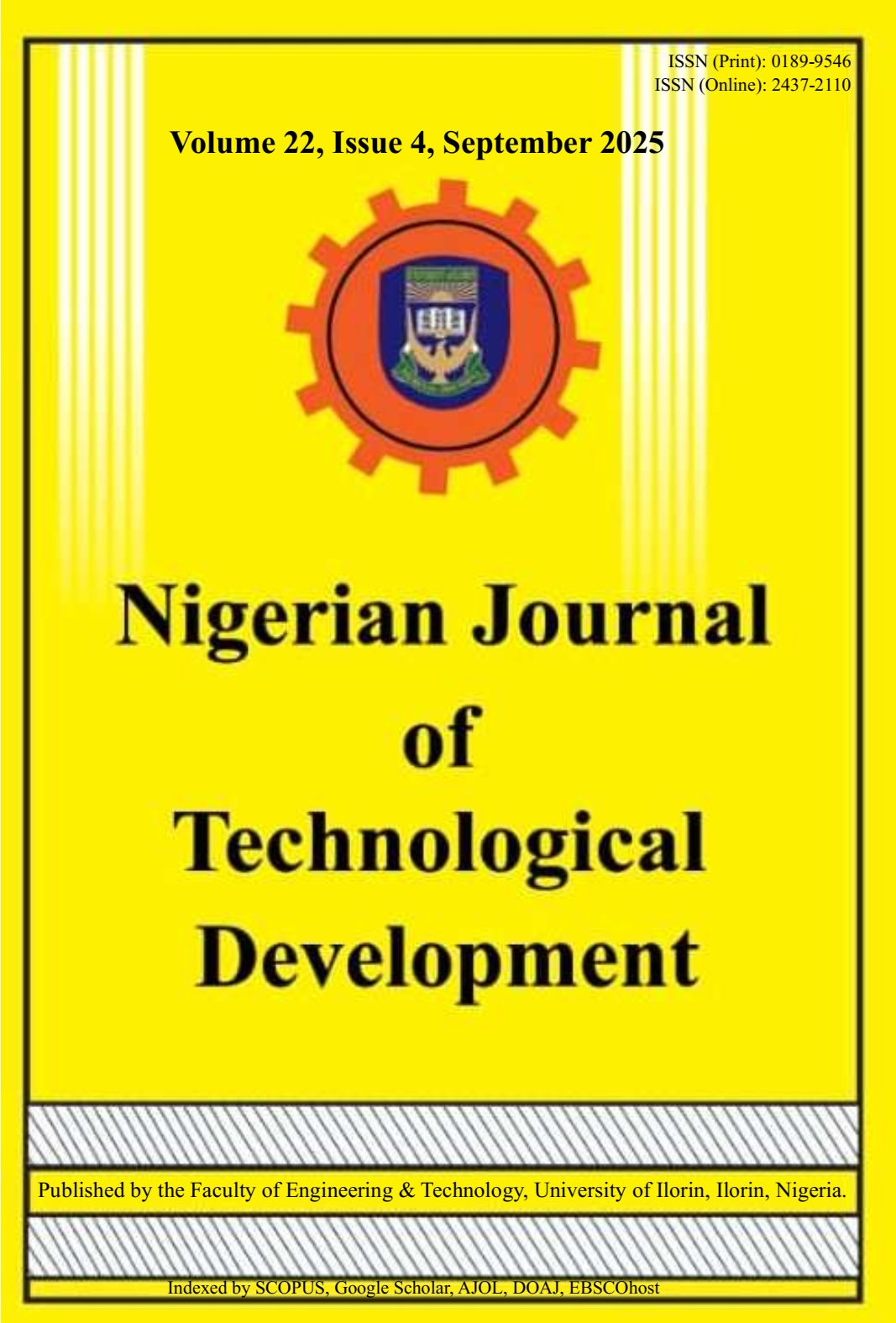Adaptive?Size Fiducial?Marker Detection with Dual?Stage Kalman Filtering for Precision UAV Landing
DOI:
https://doi.org/10.63746/njtd.v22i4.3078Keywords:
Adaptive fiducial marker, Dual‑stage Kalman filter, E‑ink display, Precision landing, UAVAbstract
Precision UAV landing systems face significant challenges with traditional fixed-marker approaches, particularly under varying environmental conditions and integration scenarios. This paper presents a novel approach combining dynamically-sized fiducial markers with dual-stage Kalman filtering to address these limitations. The methodology utilizes a 13.3-inch e-ink display showing ArUco markers that dynamically scale from 16.7 cm to 2.8 cm during descent, actively reducing marker size while accounting for e-ink display refresh constraints through predictive state estimation. A vision system processes frames at 30Hz through an optimized detection pipeline, while the dual-stage Kalman filter handles both vehicle state estimation and parameter adaptation, managing display transition dynamics. The system's universal protocol framework enables compatibility with both integrated and unknown UAV platforms through a dual-mode detection approach, combining passive visual detection with active altitude signalling. Experimental validation using a DJI F450 platform with downward-facing camera demonstrates the system achieves mean landing errors of 1.95 cm under wind conditions up to 15 km/h, representing a 59% improvement over fixed-marker approaches. The e-ink display enables reliable marker detection up to 14.2m altitude under direct sunlight conditions, outperforming LCD displays which become undetectable in bright conditions. Pixel-wise RMSE improved from 150.3 to 140.5 (x-axis) and 170.8 to 151.4 (y-axis) over four sequential landings, demonstrating robust operation across varying integration scenarios.
References
Arents, R., Groeneweg, J., Mulder, M., & Van Paassen, M. (2009). Predictive landing guidance in synthetic vision displays. In AIAA Guidance, Navigation, and Control Conference (p. 5984). https://doi.org/10.2514/6.2009-5984
Bastiaens, S., Mommerency, J., Deprez, K., Joseph, W., & Plets, D. (2021). Received signal strength visible light positioning-based precision drone landing system. In 2021 International Conference on Indoor Positioning and Indoor Navigation (IPIN) (pp. 1–8). IEEE. https://doi.org/10.1109/IPIN51102.2021.9634055
Borowczyk, A., Nguyen, D. T., Phu-Van Nguyen, A., Nguyen, D. Q., Saussié, D., & Le Ny, J. (2017). Autonomous landing of a multirotor micro air vehicle on a high velocity ground vehicle. IFAC-Papers OnLine, 50(1), 10488–10494. https://doi.org/10.1016/j.ifacol.2017.08.2032
Cabrera-Ponce, A. A., & Martinez-Carranza, J. (2017, October). A vision-based approach for autonomous landing. In 2017 Workshop on Research, Education and Development of Unmanned Aerial Systems (RED-UAS) (pp. 126–131). IEEE. https://doi.org/10.1109/RED-UAS.2017.8116073
Claro, R. M., Silva, D. B., & Pinto, A. M. (2023). ArTuga: A novel multimodal fiducial marker for aerial robotics. Robotics and Autonomous Systems, 163, 104398. https://doi.org/10.1016/j.robot.2023.104398
Ferrão, J. M. L. (2023). A multimodal vision-based sensor fusion approach for precise landing of an UAV (Master’s thesis). Universidade do Porto, Portugal.
Nguyen, P. H., Kim, K. W., Lee, Y. W., & Park, K. R. (2017). Remote marker-based tracking for UAV landing using visible-light camera sensor. Sensors, 17(9), 1987. https://doi.org/10.3390/s17091987
Park, Y., Song, W., Lee, C., Kwon, J., & Park, J. (2024). Fiducial marker-based autonomous landing using image filter and Kalman filter. International Journal of Aeronautical and Space Sciences, 25(1), 190–199. https://doi.org/10.1007/s42405-023-00605-2
Pieczy?ski, D., Ptak, B., Kraft, M., Piechocki, M., & Aszkowski, P. (2024). A fast, lightweight deep learning vision pipeline for autonomous UAV landing support with added robustness. Engineering Applications of Artificial Intelligence, 131, 107864. https://doi.org/10.1016/j.engappai.2023.107864
Ulrich, J., Alsayed, A., Arvin, F., & Krajník, T. (2022). Towards fast fiducial marker with full 6 DoF pose estimation. In Proceedings of the 37th ACM/SIGAPP Symposium on Applied Computing (pp. 723–730). https://doi.org/10.1145/3477314.3507636
Wang, Z., She, H., & Si, W. (2017). Autonomous landing of multi-rotors UAV with monocular gimbaled camera on moving vehicle. In 2017 13th IEEE International Conference on Control & Automation (ICCA) (pp. 408–412). IEEE. https://doi.org/10.1109/ICCA.2017.8284507
Wu, Y., Niu, X., Du, J., Chang, L., Tang, H., & Zhang, H. (2019). Artificial marker and MEMS IMU-based pose estimation method to meet multirotor UAV landing requirements. Sensors, 19(24), 5428. https://doi.org/10.3390/s19245428
Wubben, J., Fabra, F., Calafate, C. T., Krzeszowski, T., Marquez-Barja, J. M., Cano, J. C., & Manzoni, P. (2019). Accurate landing of unmanned aerial vehicles using ground pattern recognition. Electronics, 8(12), 1532. https://doi.org/10.3390/electronics8121532
Yasentsev, D., Shevgunov, T., Efimov, E., & Tatarskiy, B. (2021). Using ground-based passive reflectors for improving UAV landing. Drones, 5(4), 137. https://doi.org/10.3390/drones5040137

Downloads
Published
Issue
Section
License
Copyright (c) 2025 Nigerian Journal of Technological Development

This work is licensed under a Creative Commons Attribution-ShareAlike 4.0 International License.
In accordance with the Copyright Act of 1976, which became effective January 1, 1978, the following statement signed by each author must accompany the manuscript submitted: "I, the undersigned author, transfer all copyright ownership of the manuscript referenced above to the Nigerian Journal of Technological Development, in the event the work is published. I warrant that the article is original, does not infringe upon any copyright or other proprietary right of any third party, is not under consideration by another journal, and has not been published previously. I have reviewed and approved the submitted version of the manuscript and agree to its publication in the Nigerian Journal of Technological Development." A copyright transfer form can be downloaded from the NJTD Website (http://njtd.com.ng/index.php/njtd). Author(s) will be consulted, whenever possible, regarding republication of material. All authors must have access to the data presented, and the authors and sponsor (if applicable) must agree to share original data with the editor if requested.





